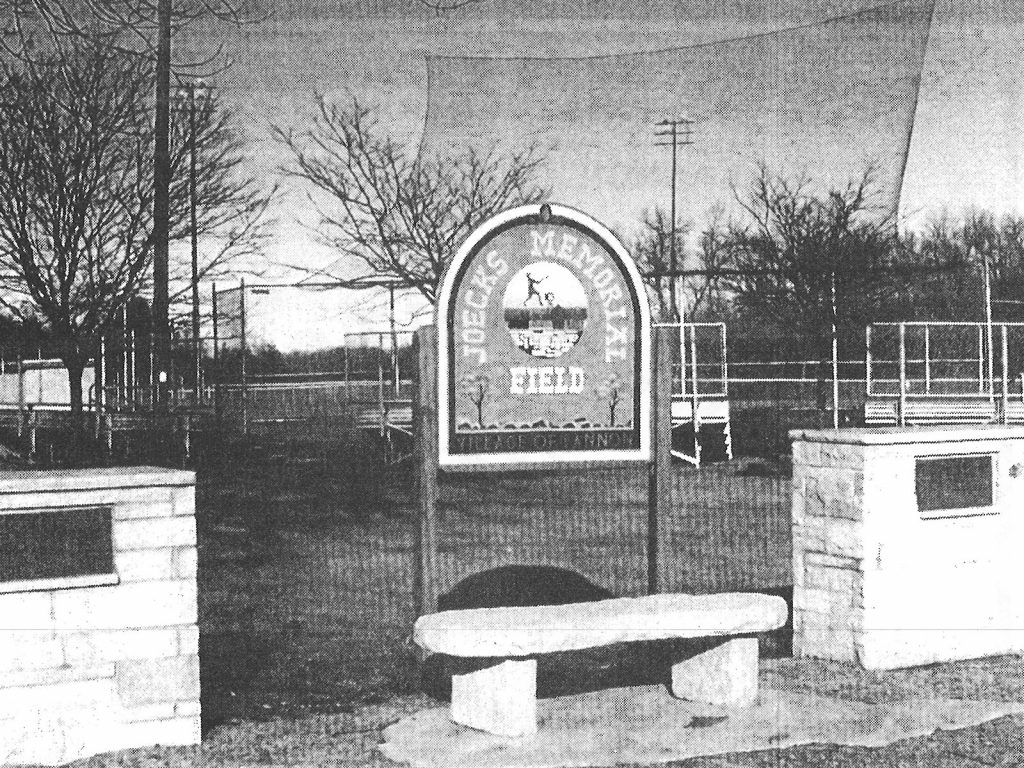
Early Formation

The Village of Lannon has gone by many names through the years. Beginning in 1842, when namesake, William N Lannon, made his journey to this area from Ireland, his settlement was then called Lannon Springs. This was actually a part of the Town of Menomonee, but due to the natural springs that were found on his land, it was often referred to as such. William N Lannon and many other Irish families settled here and wanted to form a Catholic Church for all to attend. The first Catholic mass in Waukesha County took place in the James Brogan cabin in 1842, which was adjacent to William N Lannon’s land. The now historic St. James Church was then built in 1847 and served many Catholic families in the area. Today, St. James and a majority of the land owned by William N Lannon are no longer in the Village of Lannon, but remained a part of Menomonee Falls.
Early Industry
Closer to the center of Lannon, there was an area created that was known as Hadfield. This area consists today of Lake St, Vine St, State St, Bay St, Hemlock Ln, Lannon Rd and parts of Good Hope Rd. Joseph Hadfield platted this land in 1890 and began to build homes that were used for quarry workers that worked for him in his quarry operations in the village.

Sometimes, this area was also referred to as “Stone City” at that time. After platting this land, Hadfield continued to engage in local business here, bringing in the railway and an official post office. Olavius Olson was the first official Post Master of Lannon beginning on August 2, 1890. While William N Lannon had run a postal operation on his property, as Lannon Springs, this new operation was larger and more organized than before. The postal office became known as just “Lannon” at this time.
Becoming Incorporated

It wasn’t until 1930, that the area of Lannon Springs, Hadfield and Lannon broke off from the Town of Menomonee and became their own independent village. An attempt to do this was made in 1928, but was denied by the courts, because the area wishing to be incorporated was said to be too large and contained too much quarry land. The petition was redone, bringing the request down from 640 acres to just 300 acres of land. On January 14, 1930, this petition was approved and Lannon became the 14th village in Waukesha County. Unfortunately, some of the major historical parts of what built Lannon, such as Lannon Springs, St James and the area surrounding what is now Menomonee Park, were no longer a part of Lannon.
Lannon Stone

While William N Lannon never a true quarryman, the Village of Lannon has become famous for its Lannon Stone. Early commercial quarry operations began in 1855, but stone was taken off land for personal use in the years before that. In 1847 & 1848, when St. James Church was erected, stone was taken off William N Lannon’s land to use for the church. One of the biggest quarry operations in Lannon was the William Saunders’ quarry, near Menomonee Park. Quarrying began here in 1856 and continued until after the turn of the century. The most famous operator of the quarry was Joseph Hadfield, who had numerous other quarries through the county.

Through the years, there have been dozens and dozens of quarries in Lannon. Many were smaller, one-man operated quarries, but some were very large and dealt in stone all over the country. Today, the largest operations in Lannon are run by the Dawson, Halquist and Monacelli families. All of whom have been in business for multiple generations.
Baseball Capital


Aside from stone, one of Lannon’s biggest claims to fame is that Lannon holds the title of being the home of the first ESPN live broadcast ever. In 1979, a newly formed company called Entertainment and Sports Programing Network, provided live coverage of an American Professional Slo-Pitch Softball. The teams playing on September 7, 1979 in this live broadcast were the Milwaukee Schlitz and the Kentucky Bourbons men’s softball teams. This was one of the first games of their 1979 World Series and these two teams played a double header that evening. Kentucky won game 1 and Milwaukee won game 2. Joecks Field, in Lannon, was the home field for the Milwaukee Schlitz. On the 40th anniversary of ESPN’s first live broadcast in 2019, ESPN came back to little old Lannon and reported from where it all started. The Milwaukee and Kentucky teams had a reunion and conducted interviews for ESPN. The tape that ESPN had of this first game had somehow disappeared over the years and they were unable to air it. That was until the former owner of the Milwaukee Schiltz located a copy in his possessions. The video was uploaded to multiple internet sites and was again broadcasted by ESPN. Local news outlets learned of this and the Milwaukee Journal Sentinel wrote a nice article about this. A display of this article can be viewed at the Lannon Village Hall.

Lannon’s Captivating Past
Lannon’s history cannot be summed up fully in a few short paragraphs. The companies, families and organizations that have built Lannon over the years are full of interesting pieces of information. More about Lannon’s history can be found on the Lannon History Facebook Group. There have also been multiple books written about the history here and those are available for purchase for $10 each by contacting Lannon Historian, Amy Martin, at amyemartin@live.com.


